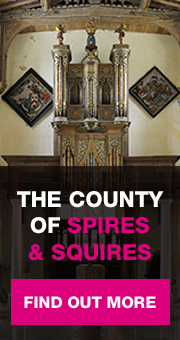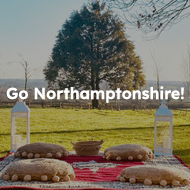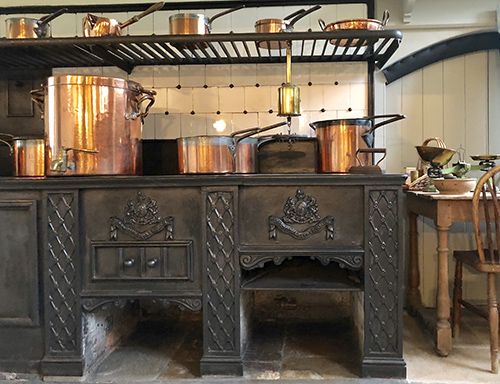3rd April 2019
Our great county has a history of producing wonderful food, and the kitchens of the great stately homes of Northamptonshire have prepared epic meals for centuries. This month I have been privileged to visit one of the finest kitchens in the county, and examine records from Boughton House’s 18th century heyday.
When John, 2nd Duke of Montague inherited his father’s estate in 1709, including the unfinished Boughton House, he had a mountain of debt to settle. John’s father Ralph had been both ambitious and self-aggrandising, determined that nothing and no one should get in his way. Unlike his unscrupulous father, John was an amiable and engaging character, happy to pursue a variety of his own interests, and to indulge his love of practical jokes. His mother-in-law, often a victim, complained that he behaved like a fifteen year old rather than a fifty-two year old. One of these silly jokes was at the expense of the French political philosopher Montesquieu, who ended up soaked after John had removed the seat from his chair, replacing it with a cushion placed over a bowl of cold water. Despite this treatment, Montesquieu stayed at Boughton with John, and enjoyed some of the generous hospitality that the great kitchens had to offer. John himself enjoyed cooking occasionally, and one of his favourites was ‘Olio’, a Spanish dish of pork and beans.
I was shown the bill of fare for one of the days Montesquieu stayed with Duke John and seven other guests. It shows that breakfast featured veal broth as well as bread and butter, tea, coffee and hot chocolate. Dinner was served early in the day, starting with a ‘soop’, then offering boiled pike, chicken, duck, partridges and a turkey, fowl cooked in rice, mutton cutlets, a hog’s head, roasted hares, an omelette, followed by apple tarts and a blancmange. Supper was similar fare, with the addition of cold meats and hare pie. Seven loaves of bread were consumed that day, along with nine bottles of wine, and one each of port and madeira. Anything left over went to the servants to finish off, and to the twenty ‘poor persons’ who begged for ‘dole’ outside in the Beggar Lodge.
The kitchen where these sumptuous meals were once prepared is still in use by the family and staff today. It is available for visitors to see once a year on a special tour, and is well worth a visit. It’s in a part of the house completed by Duke John, who seemed to have been far more interested in the kitchen than his wife Mary Churchill. Large windows let light flood onto the working surfaces, and gleaming copper pots and pans are ready for action. A large cast iron range at one end is balanced by a more modern Aga and electric ovens at the other, surmounted by a medieval looking rotating spit. A long kitchen table bearing the scars of heavy use runs down the middle of the room, providing a cosy place to sit and imagine the thousands of meals eaten there. One of my favourite things is the wonderful painting of a young girl at a market stall. Although it’s around 450 years old, the fruit and vegetables look fresh, delicious, and appetising still. Something to look at whilst hungrily waiting for dinner perhaps.
For more detail, including the special tour ‘Books, Beds and Beyond’, please visit www.boughtonhouse.co.uk
Your login details have been used by another user or machine. Login details can only be used once at any one time so you have therefore automatically been logged out. Please contact your sites administrator if you believe this other user or machine has unauthorised access.








